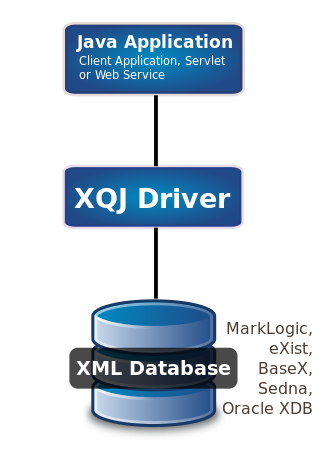This article includes a list of references, related reading, or external links, but its sources remain unclear because it lacks inline citations .(June 2023) |
| Operating system | Cross-platform |
|---|---|
| Type | Persistence Framework |
| License | GNU Lesser General Public License |
| Website | https://code.google.com/p/persist/ |
Persist is a Java-based ORM/DAO tool. It provides only the minimal amount of functionalities necessary to map objects or maps from database queries and to statement parameters.
Contents
Persist works around a java.sql.Connection object. This means that it does not care about customer query languages (it uses plain SQL with placeholders, as PreparedStatement objects use), connection pool handling, transaction handling (for the most part), and so on. This also means it is very flexible, and can be integrated with any code that depends on JDBC (including code that already use another ORM/DAO tool).
Persist does not require explicit mappings from POJOs to database tables. As long as there is some sort of naming conventions that relate database names with POJO names, Persist will require virtually no mappings. It can, however, be instructed to map Java classes and fields to database tables and columns using annotations.
Persist supports several different mapping strategies:
POJOs mapped to tables
By default, if no annotations specify a given class should not be mapped to a table, Persist will try to find a table that matches that class and create a mapping between fields and columns.
// Inserts a new customer (the class Customer is mapped to the table customer automatically)persist.insert(customer);// Reads a customer by its primary keyCustomerc=persist.readByPrimaryKey(Customer.class,42);// Retrieves customers using a custom query (note the usage of varargs)Listlist=persist.readList(Customer.class,"select * from customer where id > ?",10);// Fetch all customers and assign the ResultSet to an IteratorIteratorallCustomersIterator=persist.readIterator(Customer.class,"select * from customer");POJOs not mapped to tables
If a class is annotated with @NoTable, Persist will not try to map it to a table, and the class will only be able to hold data produced by queries.
@NoTableclassQueryData{privateintcount;privateStringconcatName;publiclonggetCount(){returncount;}publicvoidsetCount(longcount){this.count=count;}publicStringgetConcatName(){returnconcatName;}publicvoidsetConcatName(StringconcatName){this.concatName=concatName;}}QueryDataqd1=persist.read(QueryData.class,"select 1 as count, 'hello' as concat_name from dual");java.util.Map's
Map's can be used to hold data from queries. Persist will convert values returned from the query to Java types. Keys in the table are the names of the columns returned in lower case.
// Fetch a customer using a custom query and return the result as a mapMap<String,Object>customerMap=persist.readMap("select * from customer where id=?",10);// Fetch all customers and result the results as Map instances in a List List<Map<String,Object>>customerMapList=persist.readMapList("select * from customer");// Fetch all customers and assign the ResultSet to an Iterator which maps rows to Map instancesIteratorallCustomersIterator=persist.readMapIterator("select * from customer");Java primitive types
If a query returns a single column, Persist can map data directly into primitive types (either single values or lists):
// Return customer name as StringStringname=persist.read(String.class,"select name from customer where id=?",55);// Fetch all customer id's as a list of integersList<Integer>ids=persist.readList(Integer.class,"select id from customer");Custom queries with no returning data
Arbitrary queries that return no data can be easily executed.
// Execute arbitrary SQL with parameterspersist.executeUpdate("delete from customer where id in (?,?)",10,20);



